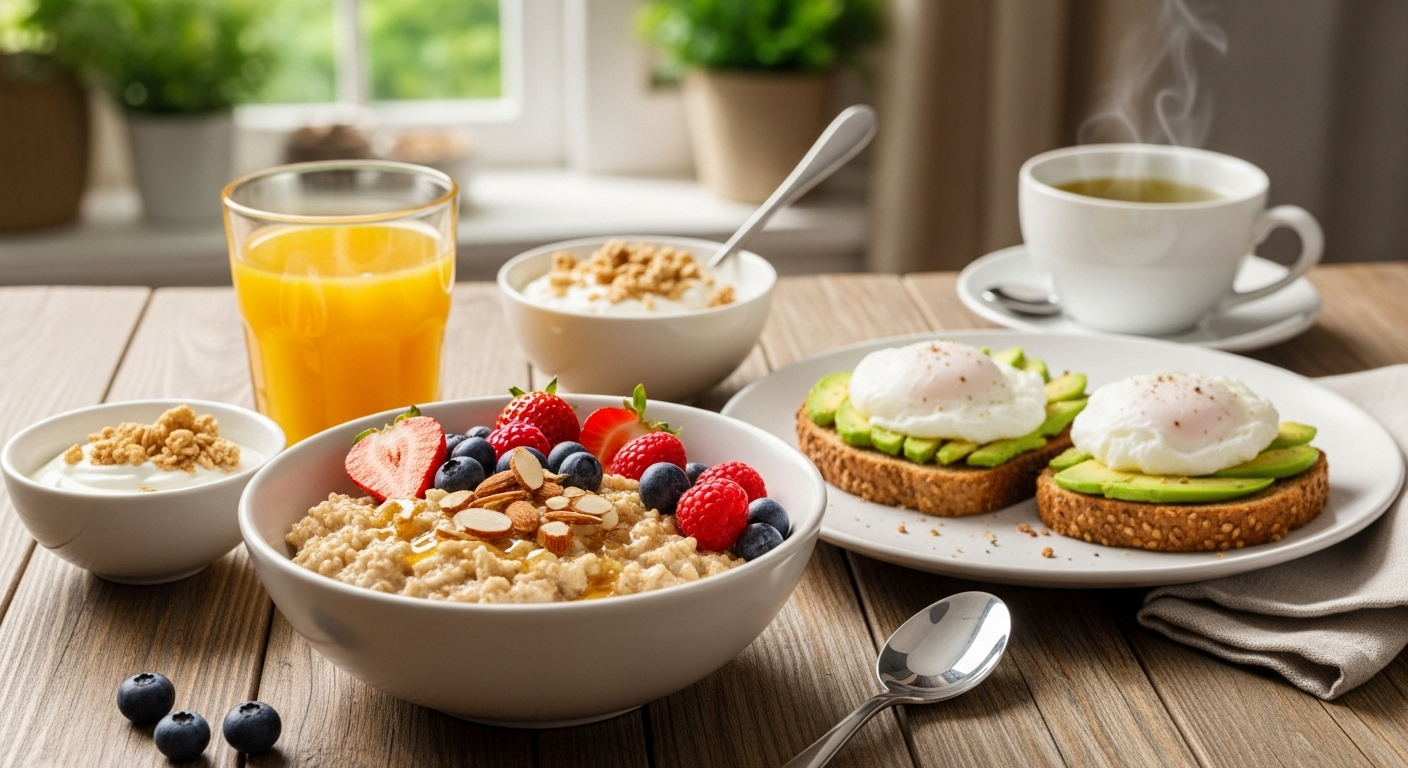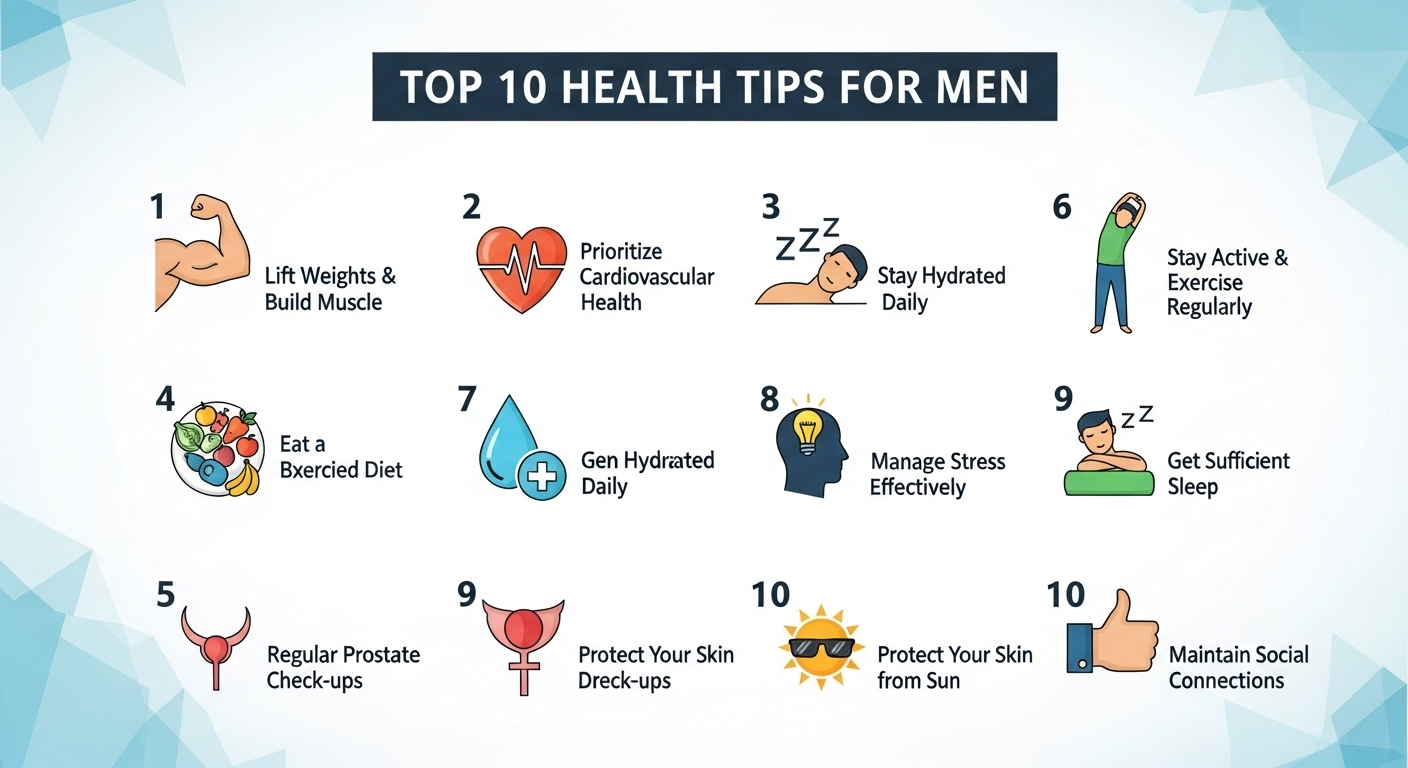
Let’s have an honest chat over a hypothetical morning cup of chai. The world of “healthy eating” has become incredibly complicated, hasn’t it? One day, we’re told to eat a big breakfast like a king. The next, we hear about intermittent fasting and skipping breakfast altogether. There are keto diets, vegan diets, and a million online influencers telling you to drink some strange green concoction that looks like it came from a science lab.
It’s exhausting. It’s enough to make you just grab the nearest packet of biscuits and call it a day.
But what if I told you that the foundation of a truly healthy morning isn’t about some fancy superfood from a faraway land? What if the best morning foods are simple, familiar, and probably already in your kitchen? After years of navigating the noise and focusing on the actual science of nutrition, I’ve realized that the perfect breakfast isn’t about a specific dish. It’s about a simple formula.
So, let’s forget the trends and talk about the timeless principles of starting your day right, with an Indian twist.
The Golden Formula: The ‘PFF’ Rule
If you remember nothing else from this article, remember these three letters: P, F, F. They stand for Protein, Fiber, and Healthy Fats. This isn’t a diet. It’s a balanced-plate formula that will change how you feel all morning. A breakfast built on this formula keeps your blood sugar stable. No sharp sugar spike followed by a crash that leaves you feeling sleepy and craving snacks by 11 AM. It provides sustained energy, keeps you feeling full and satisfied, and fuels your brain.
So, what does this look like in a real Indian kitchen?
Protein Power
This is the hero of your breakfast. Protein is what builds and repairs your body, and it’s fantastic for satiety (the feeling of fullness). Most traditional Indian breakfasts are heavy on carbohydrates and low on protein. We need to consciously change that.
Think about options like moong dal chilla, besan cheela, or a simple sprout salad. Eggs are a powerhouse of protein if you eat them. Even adding a handful of soaked almonds or a bowl of dahi (curd) to your meal can significantly boost your protein intake. The goal is to make protein a star player, not a side-show.
Fiber First
Fiber is what keeps your digestive system happy and provides that long-lasting feeling of fullness. It comes from whole foods. Instead of poha made from white rice, try poha made from brown or red rice. Instead of a white bread sandwich, use a whole-wheat or multi-grain bread. Adding lots of vegetables to your upma or poha is an easy and delicious way to increase fiber. And, of course, fresh fruits are a fantastic source.
Healthy Fats for a Happy Brain
Your brain is made of fat, and it needs healthy fats to function optimally. Our fear of fat has led us to make poor choices. Healthy fats don’t make you fat; they keep you full and satisfied. Think of the dollop of ghee on your whole-wheat paratha. Think of the handful of walnuts or soaked almonds you eat in the morning. Even adding some avocado to toast, a practice gaining popularity in India, is a great source. These fats are essential for absorbing certain vitamins and keeping your energy levels stable.
Putting It All Together: Simple, Healthy Indian Breakfast Ideas
So what does a PFF-balanced breakfast actually look like? Here are some simple ideas that don’t require you to buy anything exotic.
The Classic Moong Dal Cheela. This is almost a perfect breakfast. It’s high in protein from the dal, and you can fill it with paneer and vegetables for added protein and fiber. Serve it with a side of curd.
A Modern Vegetable Oats Upma. Use whole rolled oats instead of the quick-cooking variety. Load it with vegetables like carrots, peas, and beans for fiber. For a protein boost, sprinkle a spoonful of roasted flax seeds or pumpkin seeds on top.
The Simple Sprout Salad. A bowl of mixed sprouts (moong, chana) is a nutritional powerhouse. Add chopped onions, tomatoes, cucumber, a squeeze of lemon, and a pinch of rock salt. It’s packed with protein and fiber. You can eat a boiled egg on the side for an extra protein hit.
Masala Paneer Scramble. Instead of just eggs, try scrambling crumbled paneer with onions, tomatoes, and simple spices. It’s incredibly high in protein and healthy fats. You can have it with a slice of whole-wheat toast.
Each of these options is designed to keep you full and energized for hours, helping you avoid those unhealthy mid-morning cravings.
FAQs: The Real Questions We All Have
But what about fruit? I thought fruit in the morning was healthy.
Fruit is fantastic! It’s full of vitamins, minerals, and fiber. However, eating *only* fruit for breakfast can cause a sugar spike for some people. The best way to eat fruit is to pair it with a source of protein and fat. So, have an apple *with* a handful of almonds, or a banana *with* a bowl of Greek yogurt. This pairing helps to balance your blood sugar.
I don’t have time to cook in the morning. What can I eat?
This is a real-life problem for so many of us. A little prep the night before can be a lifesaver. You can boil sprouts or chop vegetables in advance. A simple, no-cook breakfast could be a bowl of curd with some soaked nuts and seeds and a piece of fruit. Or a simple smoothie made with yogurt, a handful of spinach, some seeds, and a small amount of fruit. It takes just two minutes to blend.
Is it true that I should drink a glass of warm water with lemon first thing?
Many people find this helps to kick-start their digestion and rehydrate their body after a long night’s sleep. From a scientific standpoint, the main benefit is the water itself. Proper hydration is crucial for every bodily function. The lemon adds a bit of Vitamin C, but the water is the real hero here. If it makes you feel good and helps you drink more water, it’s a great habit.
What is the one “unhealthiest” breakfast food I should avoid?
If there is one category to avoid, it would be anything that comes in a colourful box with a cartoon character on it. This includes sugary breakfast cereals, packaged juices, and breakfast bars that are essentially candy in disguise. They are loaded with sugar, refined carbs, and preservatives, and they will set you up for a day of energy crashes and cravings.




